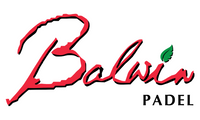Everything about building padel courts
Can It Benefit Your Sports or Tennis Club?
If you own a sports facility or tennis club and you're looking to attract more people, incorporating padel courts can significantly help you achieve that goal. The potential numbers may surprise you, as each padel court can host around 180-200 players per week, provided the courts are well-utilized. However, to maximize your chances of success, there are several factors to consider when building padel courts:
Location
The placement of the courts within your club is crucial. It's best to position them in a visible area, preferably within viewing distance of the café or clubhouse. Padel is a social sport, and having the courts in a prominent location encourages players to bring friends and families, benefiting the overall club atmosphere.
Court Orientation: For padel courts, it's essential to have a north-south facing orientation, especially because the back walls are made of glass. Unlike tennis courts, adding fabric to the back wall defeats the purpose of having a glass court. Additionally, avoid placing the courts backing onto the car park, as sun reflections can hinder gameplay.
Space Allocation: Providing ample space around each court is ideal, especially if you plan to host official tournaments. A minimum of 2 meters between courts allows players to have enough room for equipment and changing ends.
Netting and Ball Containment: Consider installing netting on top of the fence surrounding the courts to prevent balls from going out. This is particularly useful if your club is located on the perimeter or near a café or car park. Most court manufacturers can provide this feature upon request.
Environmental Factors
The environment plays a role in deciding whether to cover the courts, the type of paint used, and the grass selection. In rainy climates, it's advisable to have a cover to prevent gameplay issues caused by wet glass surfaces. If your club is near the sea, applying a layer of protective paint will help prevent corrosion of the metal and bolts.
Indoor Structure
If you require a canopy or cover for the courts, ensure it extends a few meters beyond the width and length of the court to provide adequate protection against rain. If the cover is only above, it's preferable to have a north-south court orientation due to the lighting conditions at sunset. The recommended minimum height for the indoor structure is 9 meters, with 11 or 12 meters being even better. The courts should be evenly placed under the roof, without one side sloping to the edge of the canopy while the other side has more space. A well-designed cover can extend the playable months by 4-5 months, making it a worthwhile investment.
Types of Padel Courts
There are different models of padel courts available, and various companies manufacture them. Concrete courts have a concrete back and sides with netting along the side, offering good playing conditions but limited viewing options. Standard courts feature metal supports between each glass panel, slightly interrupting the viewing experience. Panoramic courts eliminate the posts supporting the back glass for better viewing. Singles courts are an option if space is limited, but doubles courts are generally more popular due to the social aspect of padel.
Padel Court Costs
There are numerous court manufacturers worldwide, and it's relatively easy to contact them through social media or their websites. Request quotes from multiple companies, as prices can vary significantly for similar courts. Ordering multiple courts can often reduce shipping costs, as two courts can be shipped in the same container. Consider the quality and features of the courts rather than opting for the cheapest option. Ensure you understand what is covered in the quote, including shipping, installation, cranes, and local charges.
Foundation
The foundation of the courts is crucial and should not be overlooked. Consult with the court manufacturer to obtain the specific foundation specifications for your padel courts. It's important not to take shortcuts in this area, as a proper foundation is essential for long-term court durability and performance. Avoid the temptation to simply lay the courts on a flat surface, especially if it was originally a tennis court. Engage with a knowledgeable contractor who understands the requirements for building a solid foundation tailored to padel courts.
Number of Padel Courts
It's advisable to consider installing more than just one or two courts. Having a larger number of courts provides more opportunities for sport development, such as hosting proper tournaments and accommodating coaching sessions. Additionally, constructing more courts can help recoup construction costs faster. Many clubs that initially installed only one or two courts regretted not having more, and they often seek permission to expand. If you're in a medium to large city in Europe (excluding Spain, where competition is fierce), it's recommended to aim for at least six or more courts.
Plan Your Launch
Planning the launch of your padel courts is a critical aspect of the project. This is especially important if padel is relatively new in your area and you don't have an existing padel community. Take the time to find a skilled coach who can manage events and provide lessons. It's worth noting that padel coaches are not easy to find, so ensure you have a qualified individual dedicated to padel instruction. Set up your booking systems in advance and train your staff to handle the influx of interest once padel gains momentum at your club. Lastly, develop a strategic approach to social media and establish clear objectives for promoting and growing your club.
In conclusion, incorporating padel courts into your sports or tennis club can have significant benefits. However, careful consideration of factors such as location, court orientation, space allocation, environmental conditions, indoor structure, court types, costs, foundation, and the number of courts is essential for a successful implementation. By planning your launch effectively and investing in the necessary resources, you can attract more players, enhance the club atmosphere, and create a thriving padel community within your establishment.



